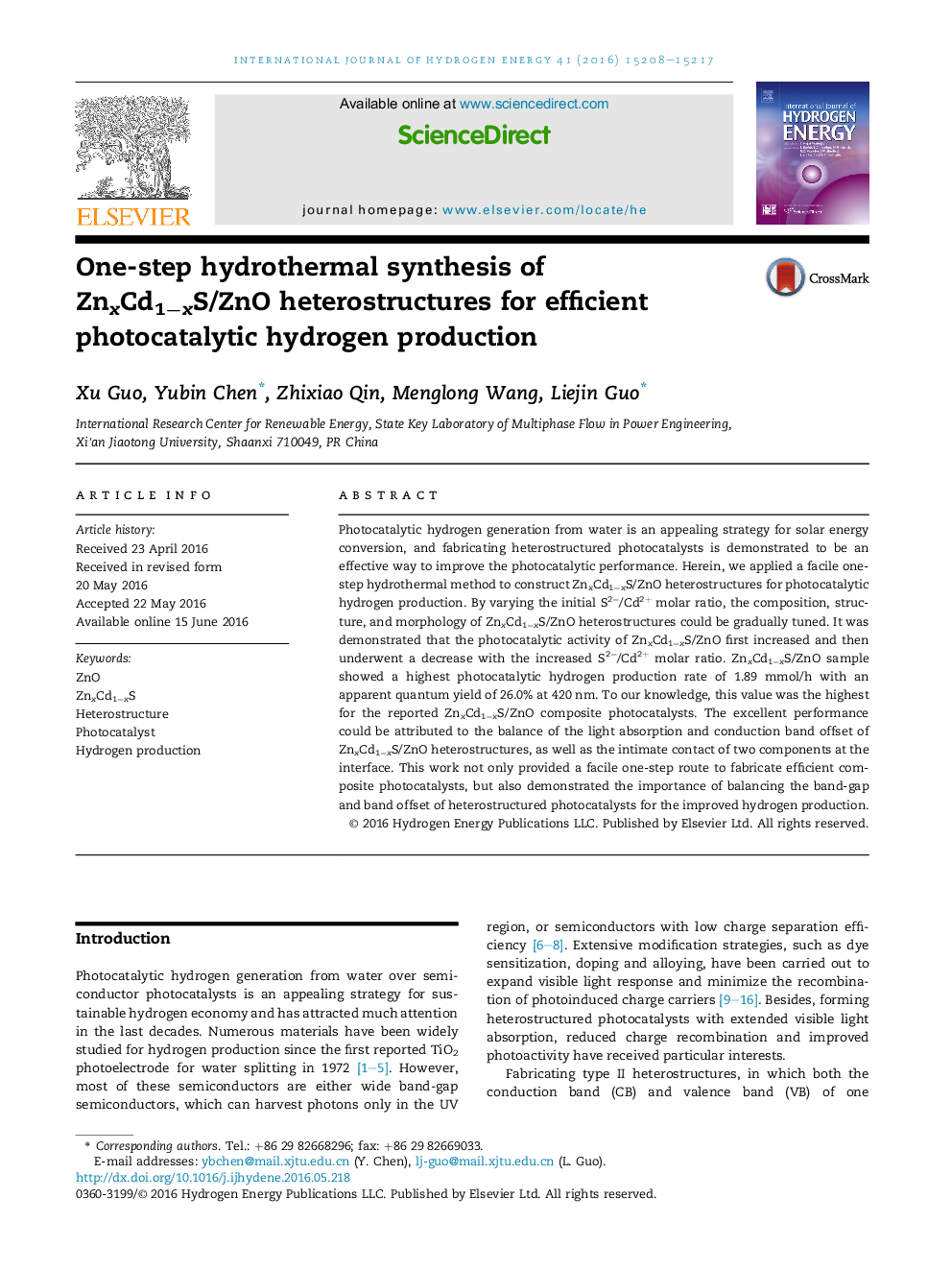| Article ID | Journal | Published Year | Pages | File Type |
|---|---|---|---|---|
| 1270399 | International Journal of Hydrogen Energy | 2016 | 10 Pages |
•ZnxCd1−xS/ZnO heterostructures are fabricated by a one-step hydrothermal method.•The composition, structure, and morphology of ZnxCd1−xS/ZnO can be tuned.•ZnxCd1−xS/ZnO photocatalyst exhibits an apparent quantum yield of 26.0% at 420 nm.•Balancing the band gap and band offset in heterostructured photocatalysts is crucial.
Photocatalytic hydrogen generation from water is an appealing strategy for solar energy conversion, and fabricating heterostructured photocatalysts is demonstrated to be an effective way to improve the photocatalytic performance. Herein, we applied a facile one-step hydrothermal method to construct ZnxCd1−xS/ZnO heterostructures for photocatalytic hydrogen production. By varying the initial S2−/Cd2+ molar ratio, the composition, structure, and morphology of ZnxCd1−xS/ZnO heterostructures could be gradually tuned. It was demonstrated that the photocatalytic activity of ZnxCd1−xS/ZnO first increased and then underwent a decrease with the increased S2−/Cd2+ molar ratio. ZnxCd1−xS/ZnO sample showed a highest photocatalytic hydrogen production rate of 1.89 mmol/h with an apparent quantum yield of 26.0% at 420 nm. To our knowledge, this value was the highest for the reported ZnxCd1−xS/ZnO composite photocatalysts. The excellent performance could be attributed to the balance of the light absorption and conduction band offset of ZnxCd1−xS/ZnO heterostructures, as well as the intimate contact of two components at the interface. This work not only provided a facile one-step route to fabricate efficient composite photocatalysts, but also demonstrated the importance of balancing the band-gap and band offset of heterostructured photocatalysts for the improved hydrogen production.
Graphical abstractTable of contents entry.Figure optionsDownload full-size imageDownload as PowerPoint slide
